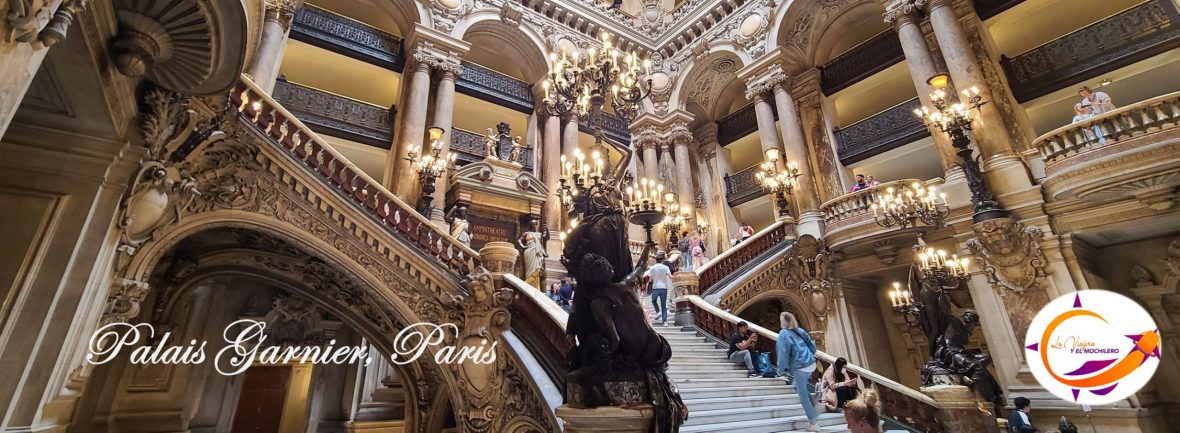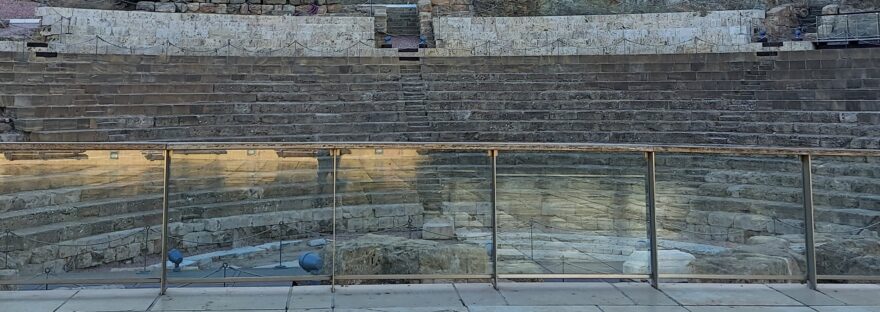Located in the historic center of the city of Malaga, the Roman Theater is the first thing that stands out when you arrive in this beautiful city of Andalusia. It is the archaeological remains of what would be the Roman Malaca dating back to the VII-VI centuries B.C. with the configuration of the Phoenician city of Malaka and the main vestige preserved of the Roman presence in Malaga.
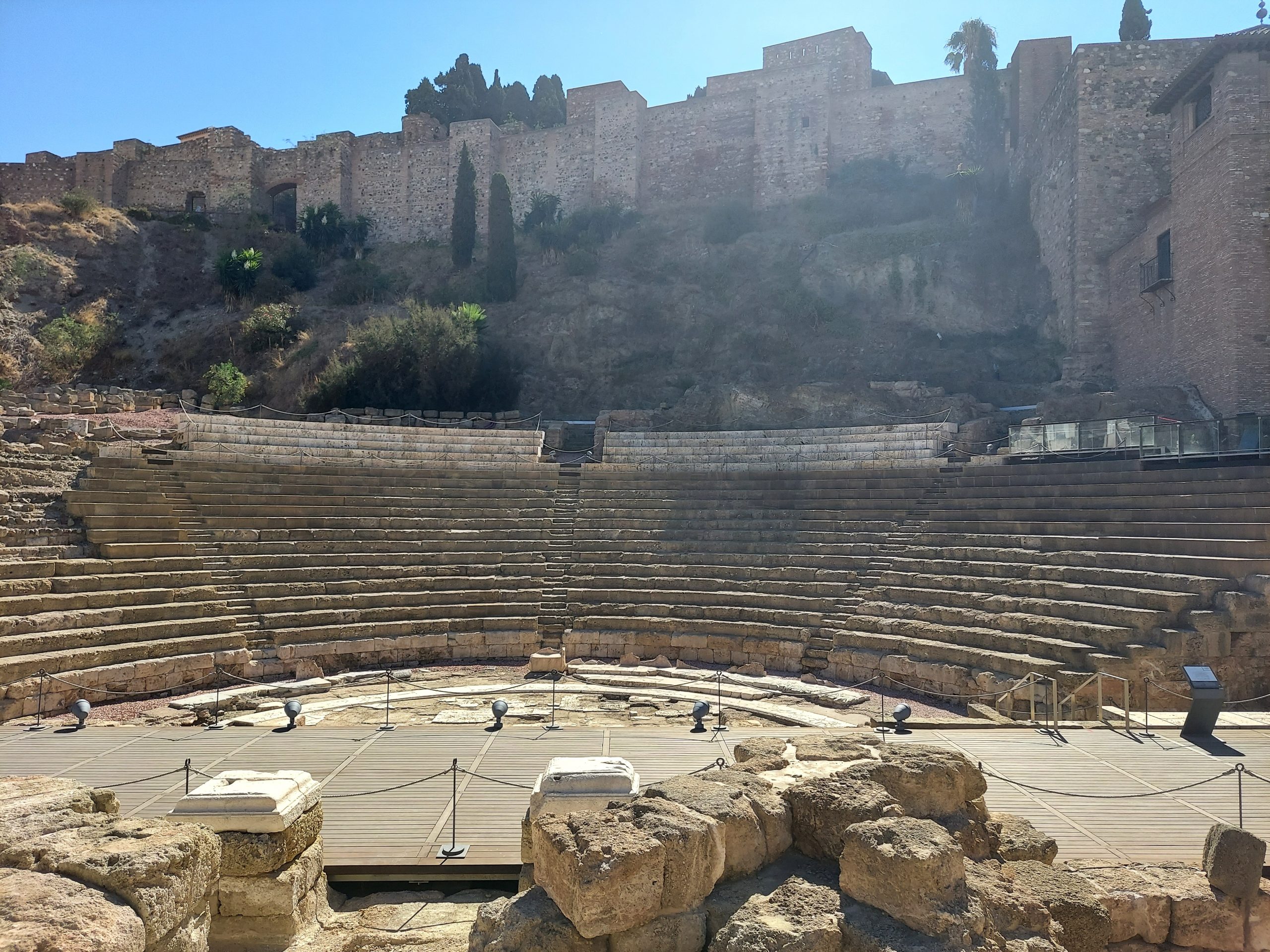
A product of the early years of the Empire, its design corresponds to a mixed construction that combines the use of the hillside for the stands (like the Greek theaters) an important construction where the use of rock is nonexistent, thus creating the necessary space for the stands.
The Roman Theater of Malaga is built within a process of monumentalization of public spaces in Roman times. Both in the theater and in other public spaces developed through well-defined programs, not only considering the political ideals of Rome, but also economic and religious factors. In order to become the stage for the ideological expression of the emperors, numerous public buildings such as baths, show buildings and new administrative buildings, among others, were built. This development lasted until the first half of the 2nd century. Towards the end of the second century, the theater would already be of little use and by the third century, it was in total abandonment. Then, a factory was set up in the area for the industrial exploitation of salted fish and the production of derived sauces such as garum, which remained active until the 5th century. And it is from the 5th century onwards that a new change of use took place. The space of the Roman theater is presented as a necropolis area from which a series of burials have been excavated. Some tombs are preserved at a higher level than the theater, to the west of the interpretation center.
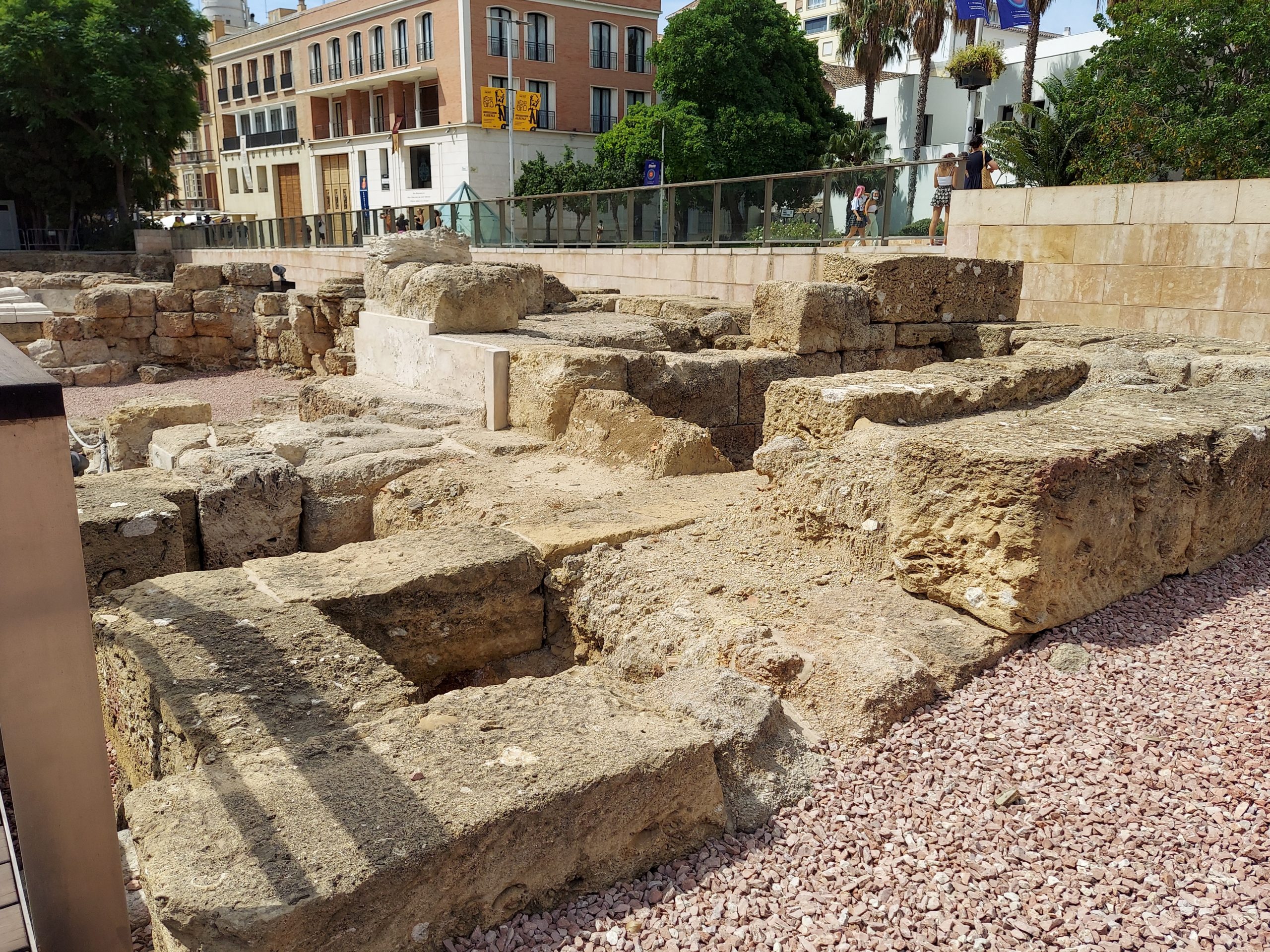
Commercial vitality will return with the Byzantine occupation, although this revival would end by the 7th century. After the Muslim conquest in 711, a military enclosure and a mosque were built on this site.
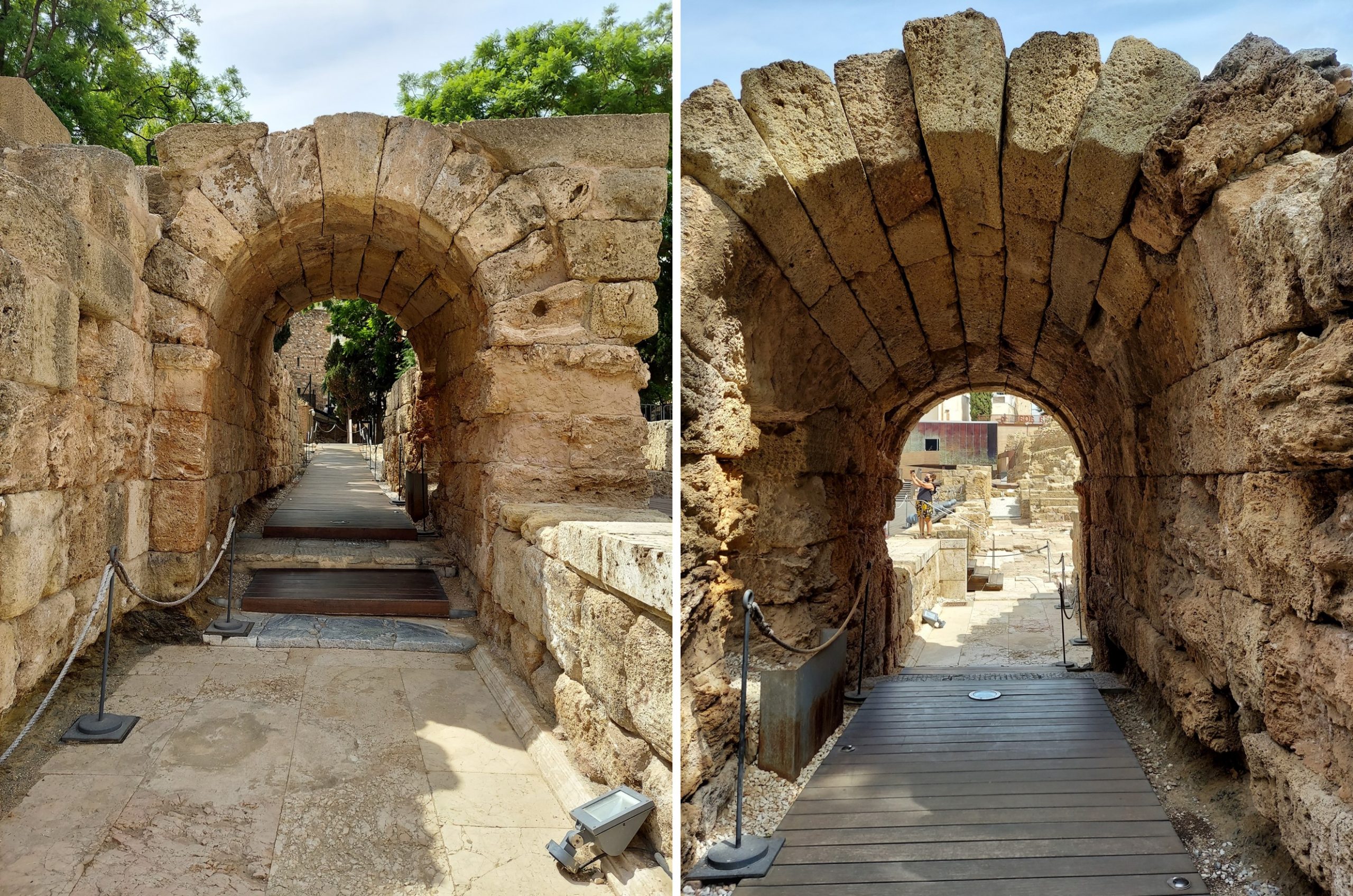
The Roman Theater of Malaga is a medium-sized theater that retains much of the cavea or bleachers, the orchestra richly decorated with large marble slabs, and the scaena, which today has the floor with a wooden floorboard as it would have at the time of use. The scenic apparatus would close at the back with an ornamental facade decorated with openings, columns and sculptures, of which several of them have been recovered.
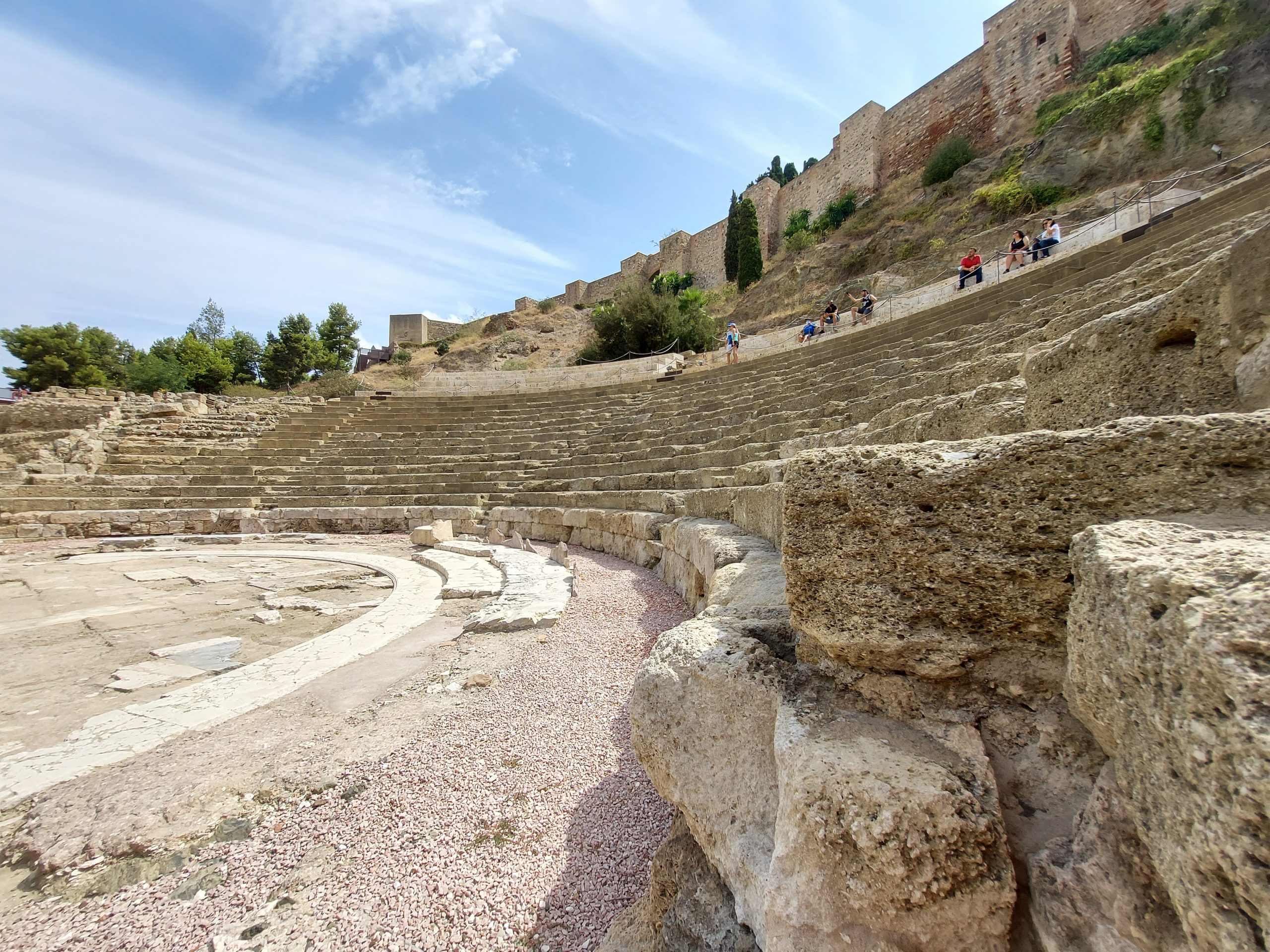
From the constructive point of view, it is a mixed work since it takes advantage, on the one hand, of part of the hillside to settle an important sector of the cavea (seating tiers), in the style of the Greek theaters, and the rest rises on artificial foundations.
The Theater was unearthed in 1951 during the course of works for the realization of a landscaped space, after remaining for centuries, hidden under the streets and houses that existed on the slope of the Alcazaba. At first the remains were identified with one of the gates of the wall. Shortly afterwards it became clear that it was in fact the Aditus Maximus of a theatrical building from Roman times. This building continued underneath the modern Archives, Libraries and Museums building, known as “Casa de la Cultura”.

In 2010, the Interpretation Center of the Roman Theater was inaugurated. Here you can learn about the life and customs of the time, particularly the Roman theater, through audiovisuals and original pieces recovered in the excavations carried out at this site. The building designed by architect Antonio Tejedor is a quadrangular prism of steel, wood and glass, whose outer walls reproduce fragments of the Lex Flavia Malacitana.
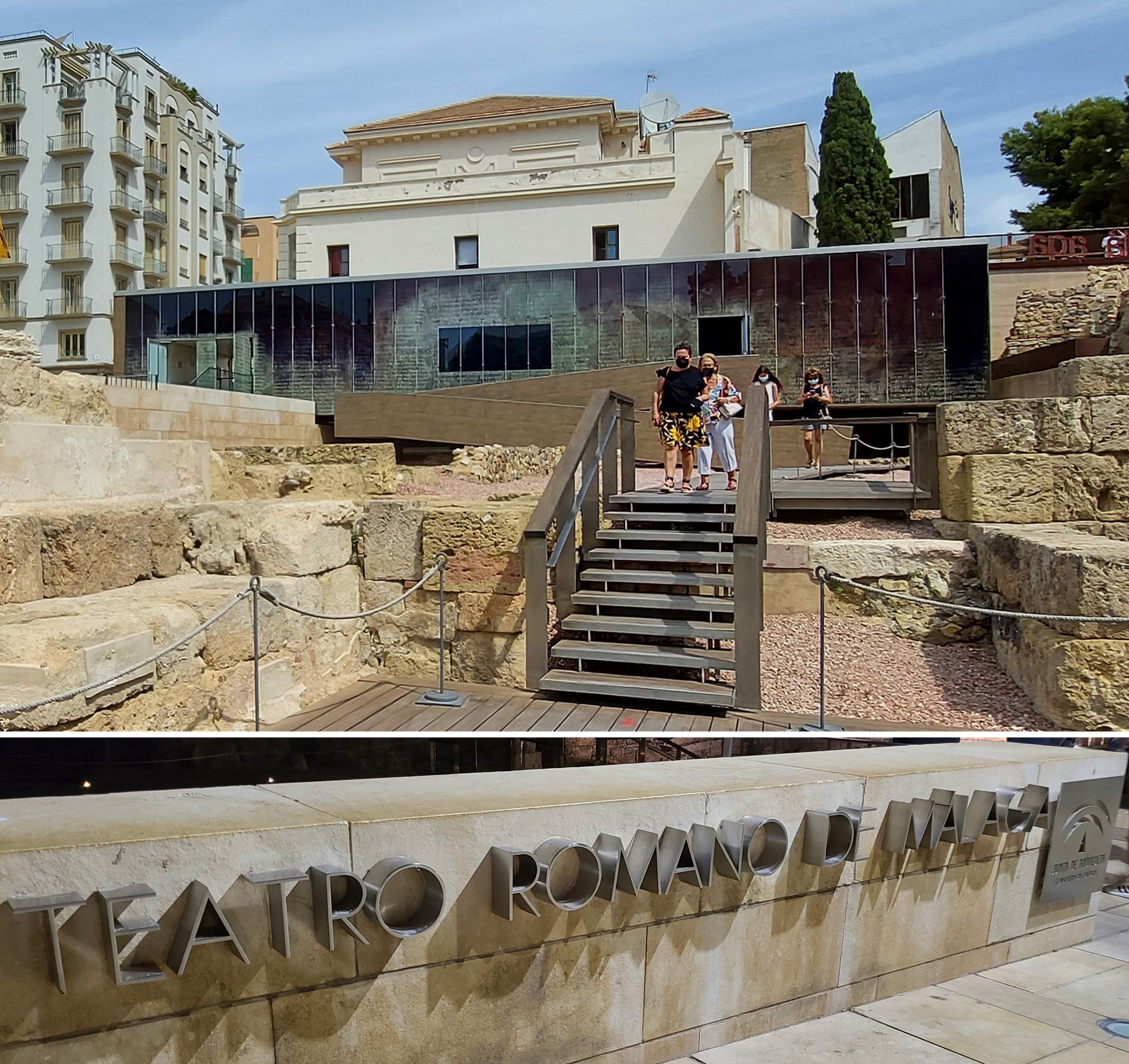
The Roman Theater of Malaga was declared of Cultural Interest (BIC) in the category of Artistic Monument, by Decree dated March 16, 1972.
The Roman Theater of Malaga in unescapable from being viewed. At any time, day or night, stopping to observe it is practically a must and the best thing, it is free.
Resources:
- https://www.juntadeandalucia.es/cultura/enclaves/enclave-arqueologico-teatro-romano-de-malaga
- https://es.wikipedia.org/wiki/Teatro_romano_de_M%C3%A1laga
- http://www.malagaturismo.com/es/recursos-turisticos/detalle/teatro-romano/413
